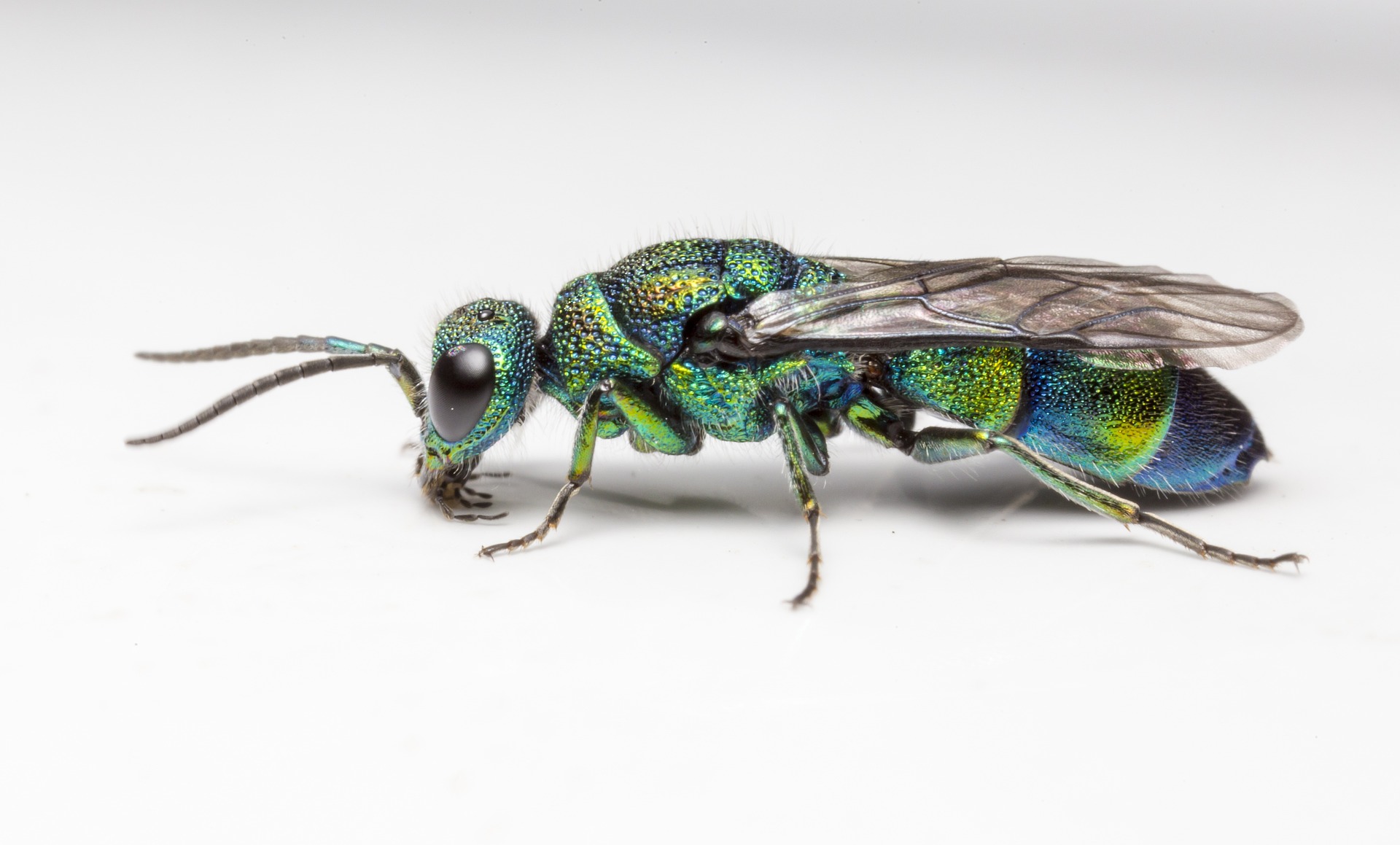Chrysis angolensis is a species of cuckoo wasp belonging to the family Chrysididae. Here are some key features and characteristics of Chrysis angolensis:
- Appearance: Cuckoo wasps, including Chrysis angolensis, are known for their metallic coloration, often exhibiting shades of bright red, orange, blue, green, or purple. They typically have a slender and elongated body, with a narrowed waist between the thorax and abdomen. Chrysis angolensis may have specific coloration and patterns unique to its species.
- Size: Cuckoo wasps vary in size, but Chrysis angolensis is generally small, measuring around 5 to 10 millimeters (0.2 to 0.4 inches) in length.
- Habitat: Chrysis angolensis can be found in various habitats, including woodlands, grasslands, scrublands, and gardens. They are often associated with areas where their host species of solitary bees and wasps are present.
- Lifecycle: Like other cuckoo wasps, Chrysis angolensis is a parasitoid, meaning its larvae develop by parasitizing the larvae or eggs of other insects, particularly solitary bees and wasps. Female Chrysis angolensis lay their eggs in the nests of host species, and upon hatching, the larvae consume the provisions or larvae of the host.
- Behavior: Adult Chrysis angolensis are primarily active during the day and can often be seen searching for suitable host nests or feeding on nectar from flowers. They are solitary insects and do not live in colonies like some other species of wasps.
- Defense Mechanisms: Cuckoo wasps, including Chrysis angolensis, have a hardened exoskeleton and may curl into a tight ball when threatened. Their metallic coloration may also serve as a warning signal to potential predators.
- Conservation: While specific information about the conservation status of Chrysis angolensis may be limited, cuckoo wasps, in general, play important ecological roles as parasitoids, helping to regulate populations of other insect species. Conservation efforts aimed at preserving and restoring natural habitats can benefit cuckoo wasp populations as well as their host species.
Overall, Chrysis angolensis is a fascinating and visually striking insect species with intriguing behaviors and life cycles, contributing to the intricate web of interactions within ecosystems.
Visited 1,079 times, 6 visit(s) today
Views: 1278
Subscribe to the newsletter:
